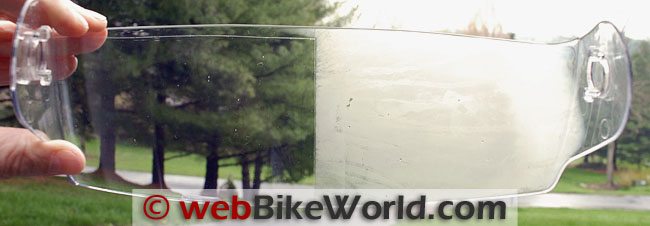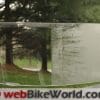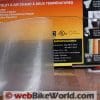A permanent anti-fog coating for motorcycle face shields that works and is a better solution than the Pinlock or temporary anti-fog coatings.
Just a few weeks ago, in March of 2011, the Université Laval sent us a press release announcing a new permanent anti-fog coating for motorcycle helmet face shields. They claimed it is the “very first permanent anti-fog coating”.
Not long after that, an email arrived from the RIA Company in St. Ouen l’Aumone, France.
RIA has been producing a permanent anti-fog coating used for aviation instruments, windshields and military applications.
The coating is called the RIA2 permanent anti-fog coating and it is also used on motorcycle helmet face shields.
RIA invited me to send over a few face shields for treatment and we could evaluate the results and report back to our readers. This is my report.
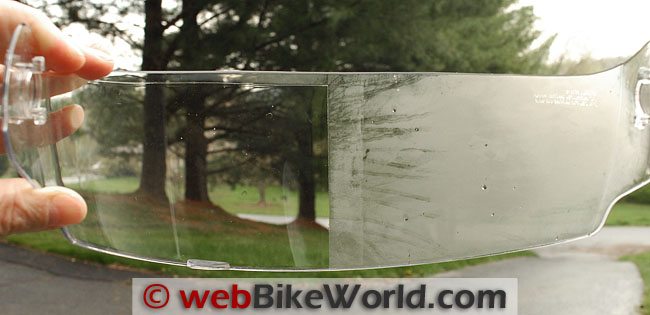
Technical Details
RIA originally developed the RIA2 anti-fog coating for use on aviation instruments, which can become fogged during changes in altitude, temperature and humidity.
They have since expanded the use of the coatings to other aviation, sports, police, fire and military uses.
There are some unique applications for the coating, including windshields in hybrid and electric automobiles, to help reduce the load on the air-conditioner and defrosting systems.
The coating is a permanent treatment that is flow-coated on to the glass or polycarbonate surface and then “fixed” at high temperatures.
According to RIA, the RIA2 coating is a water-based solution which is crystallized on the substrate. After the flow-coating, the face shield or visor is processed in an oven at +130°C, or with infrared heat.
The RIA2 coating has a “highly hydrophilic permanent characteristic”, according to RIA. They said that “the bonding of molecules with the substrate and between each other prevents the dilution of coating”.
The RIA2 coating can be applied to glass or on any plastic substrate by first using a primer coating. Typical uses include polycarbonate or PPSU plastic, which can withstand the brief exposure to high temperatures required to “fix” the anti-fog coating.
It is an original equipment (OE) process, designed for a continuous process, high volume use.
However, RIA manually coated the face shields I sent and I asked them to partially treat the face shield shown in the photos, so we could compare the treated vs. the non-treated areas.
RIA said that “the RIA2 coating absorbs and allows a thermal exchange, which further reduces the condensation phenomenon and the surface of material is also then less subject to the condensation phenomenon.
The thickness of the coating enables the visor to sustain high temperatures variances, from -40 degrees C to +90 degrees C and humidity levels over 95%.
Typical thickness of the RIA2 coating application ranges from 5 µ to 10 µ and features less than 1% loss in light transmission.
The face shields to be treated with the RIA2 coating must be “raw”, right out of the mold, and before any other anti-scratch or anti-fog treatment has been applied.
The optical quality is unchanged, although there are a few very minute artifacts in the face shields I received, due to the fact that these face shields has been previously used on motorcycle helmets and had been coated with anti-fog treatments that were first removed by RIA.
RIA says that the optical properties on both glass and plastic is considered to be one of the major advantages.
RIA also stated that the less than 1% light transmission loss after the RIA2 coating is applied which cannot be perceived by human eye.
The RIA2 coating exceeds the requirements of ECE22/05 – EN166:2001 – EN168:2001 and is compliant to MIL-I-83336B.
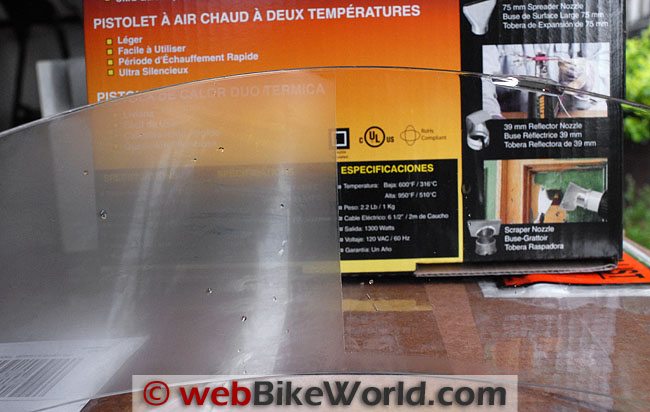
Durability
The service life of the RIA2 coating is considered as the lifetime of the visor or substrate. It is a permanent coating and needs no refurbishment or maintenance.
RIA said that the RIA2 coating has been in service on some Airbus airplanes for 14 years so far on their flight instruments, despite daily exposures to high humidity and numerous thermal cycles.
Water tests have demonstrated that the performances levels of the RIA2 coating do not change at 13 days at 50 degrees Celsius.
For motorcycle use, face shields treated with the RIA2 coating have gone the equivalent of 10 years with no degradation of performance. RIA says the coating is resistant to scratching.
Conclusion
The RIA2 permanent anti-fog coating seems to be the “Holy Grail” of motorcycle helmet face shields.
It obsoletes the Pinlock system, in my opinion, which is a clumsy approach, due to the requirements for special attachments and its soft nature, which makes it difficult to keep clean without scratching.
Many users report changes in optical quality at night when using the Pinlock system.
The RIA2 coating is also a permanent resolution of the fogging problem, unlike the temporary anti-fog treatments, which work only up to a point.
So what’s the next step? I will be corresponding with our contacts at the various motorcycle helmet manufacturers to let them know about the RIA system, which is ready and available to bring “in house” to any visor manufacturing location.
RIA does not coat end-user face shields as the process is not designed for individual coatings but optimized for large quantities. They are interested in working with manufacturers for original equipment processing.
I would think that if enough webBikeWorld readers sent an email to their favorite helmet manufacturer, requesting that they use the RIA2 treatment on their face shields, the manufacturers would get the message.
Surely, motorcyclists would be willing to pay a little extra to buy a helmet with a face shield that has a real permanent anti-fog coating that actually works, and this is it.
Owner Comments and Feedback
See details on submitting comments.
From “G.H.” (November 2013): “I hereby pronounce that this is a safety measure that should have been developed by manufacturers and rolled out a long time ago.
And in not doing so find the helmet manufacturers to be complicit to the accidents that have occurred due to fogging up of visors (let’s just hazard a guess that even one death should give them all conscience).
I now ask that this is promoted with all strength as it can save lives and make the riding experience a lot more comfortable.
Can we really imagine the head on collision of an 800 Harley or large tourer — and more to the point — the damage it would do to a car and its owner (its because we are vulnerable that no one has given a toss)?
I really wish I had a few million- I’d definitely invest in a motorcycle helmet to have these fitted standard.”


